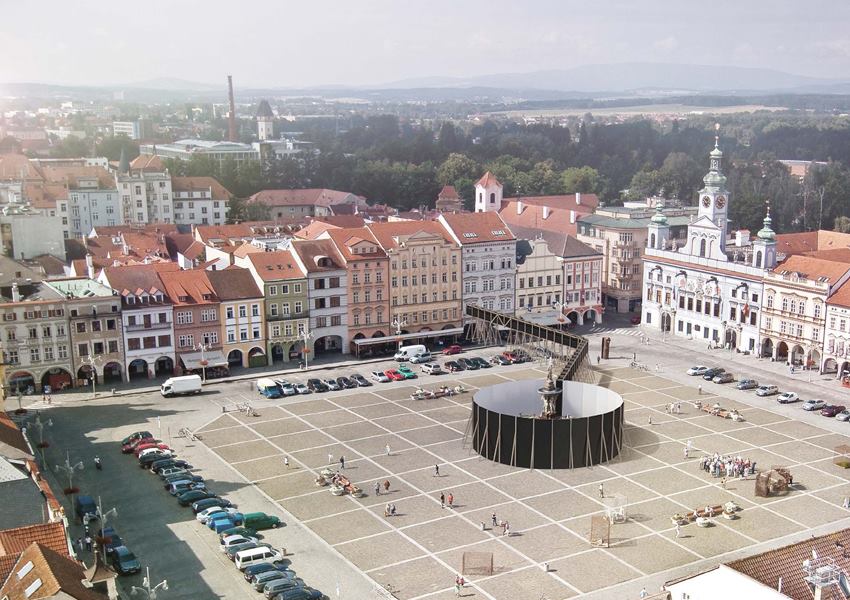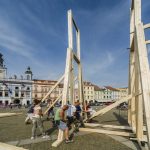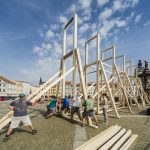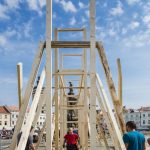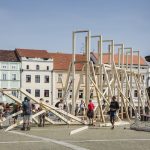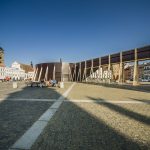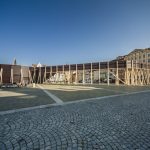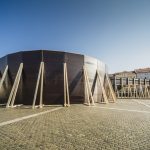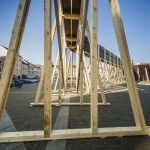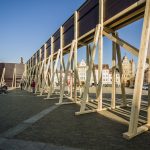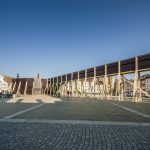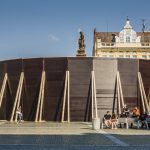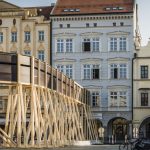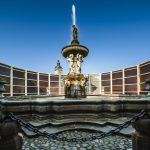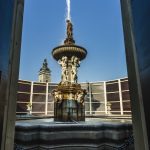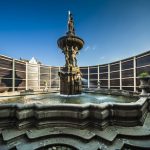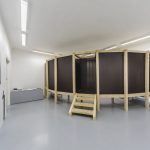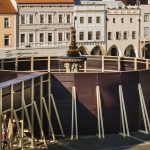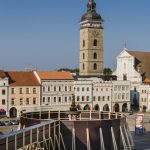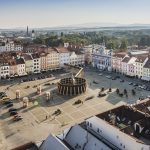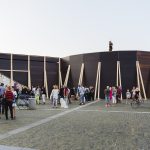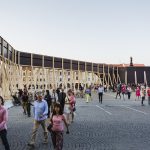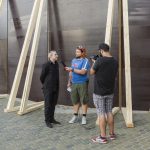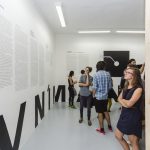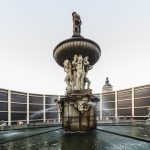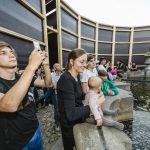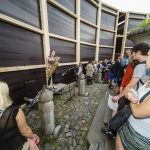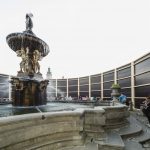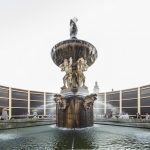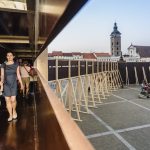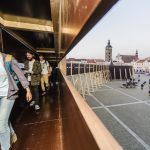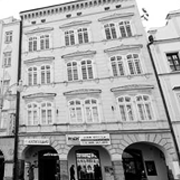Jan Šépka Architects – Perception
| Date | – |
|---|---|
| Curator | Michal Škoda |
Author: Doc. Ing. acad. arch. Jan Šépka
Cooperation: Ing. arch. Jan Bárta
This project is a reflection on what we consider an important part and a dominating feature of public space, and how we perceive certain hidden spaces that provide us with social and cultural activities.
The Baroque Samson Fountain located on the town square of Přemysl Otakar II in České Budějovice is one of the largest of its kind in the country and is a significant symbol and landmark of the city. Its artistic quality is indisputable, and none of us today could imagine the town square without this feature. The question may remain, however, whether we perceive such a dominant feature nowadays only involuntarily. We walk past it every day and only because its value is historically and spatially confirmed, we no longer think about the fundamental nature of this monument, nor of its relationship to the space of this broad town square.
Conversely, the first floor of the House of Art, which in recent years has offered up very attractive artistic experiences, is blurred before our eyes. The visitor who is unaware of this situation is hard pressed to find the gallery. It is clear that concealing the gallery space in some form may also serve as an advantage, nonetheless, experiences of exhibitions and any discussions about art and culture are disappearing from our normal daily repertoire.
This project attempts to point out how we perceive, or do not perceive, landmarks and hidden places that are not far apart from each other and are located in the center of events and offer up cultural activities. The purpose should be to tear down our stereotypical perceptions of such values as well as an attempt to reflect and debate on these topics.
The Samson Fountain would, for about a month, be located in a circular space which on one hand would separate it from the square itself, and at the same time would create a peaceful background and intimacy for it that the landmark would never have. The fountain would thus find itself as a jewel in a gallery. The circular space would be connected directly via the stairs to the first floor of the House of Art, where a circle would appear again, but in another context. Visitors in the gallery would only be able to move along a predefined circular path and would not actually enter the free space of the gallery, perceiving the space only through the ceiling, which would not be installed in the indoor promenade. The deliberate removal of the fountain and highlighting the entrance to the House of Art through a window is the overall purpose of the proposed project. Things that are seemingly unrelated would now be set into an interesting confrontation. The project is an art installation which may have a parallel to some similar achievements abroad by such known figures such as Christo and the circle of Parisian New Realists, who started thinking on the entry of art into public spaces in the 1960’s, or the Japanese artist Tadeshi Kawamata. These artists managed to expand their intentions from museums and galleries to urban areas and into nature. Due to the proportions of their projects and their social attractiveness, they managed to subtly convey their artistic opinions to large number of people, which is also our intention.
Doc. Ing. acad. arch. Jan Šépka
Wrote about the exhibition
the high number of visitors in the gallery
Cultural Event of the Year 2016
Fountain has already 20 thousand visitors
on the exhibition over six thousand people
Thousands of people at the exhibition….
Samsons Fountain covering wooden Wall
Samson’s fountain disappeared…
The Fountain disappeared behind the wall
Jan Šépka Architects – Perception
